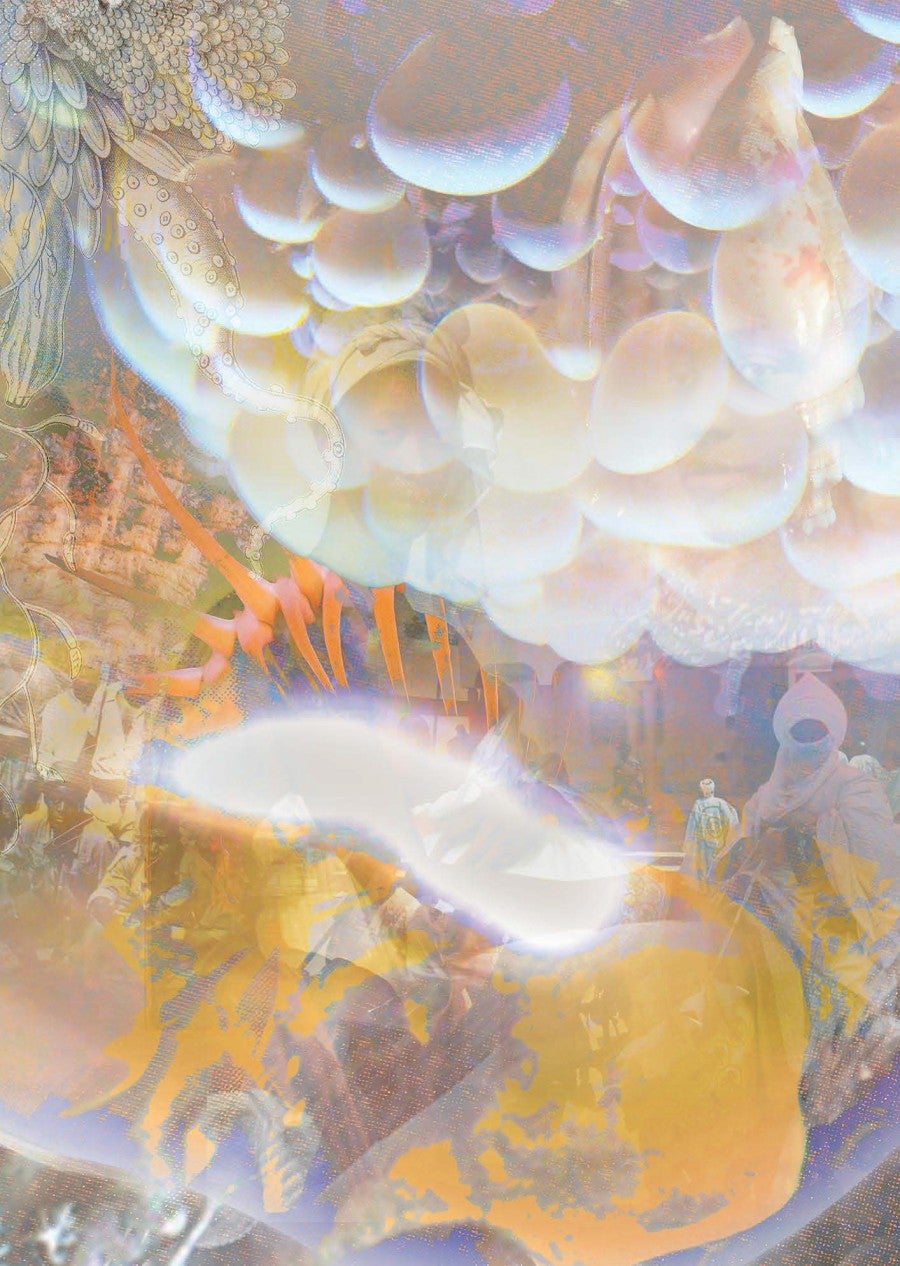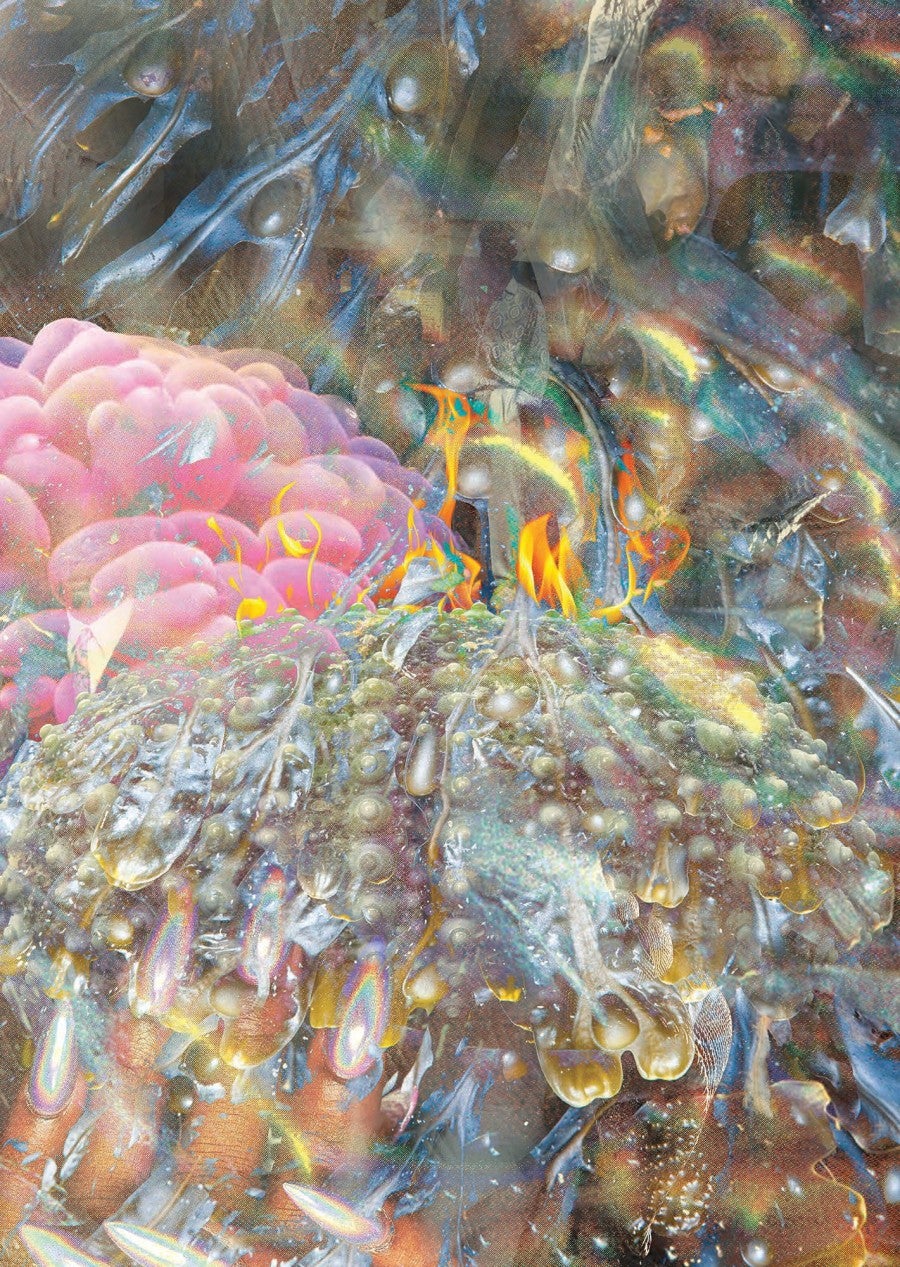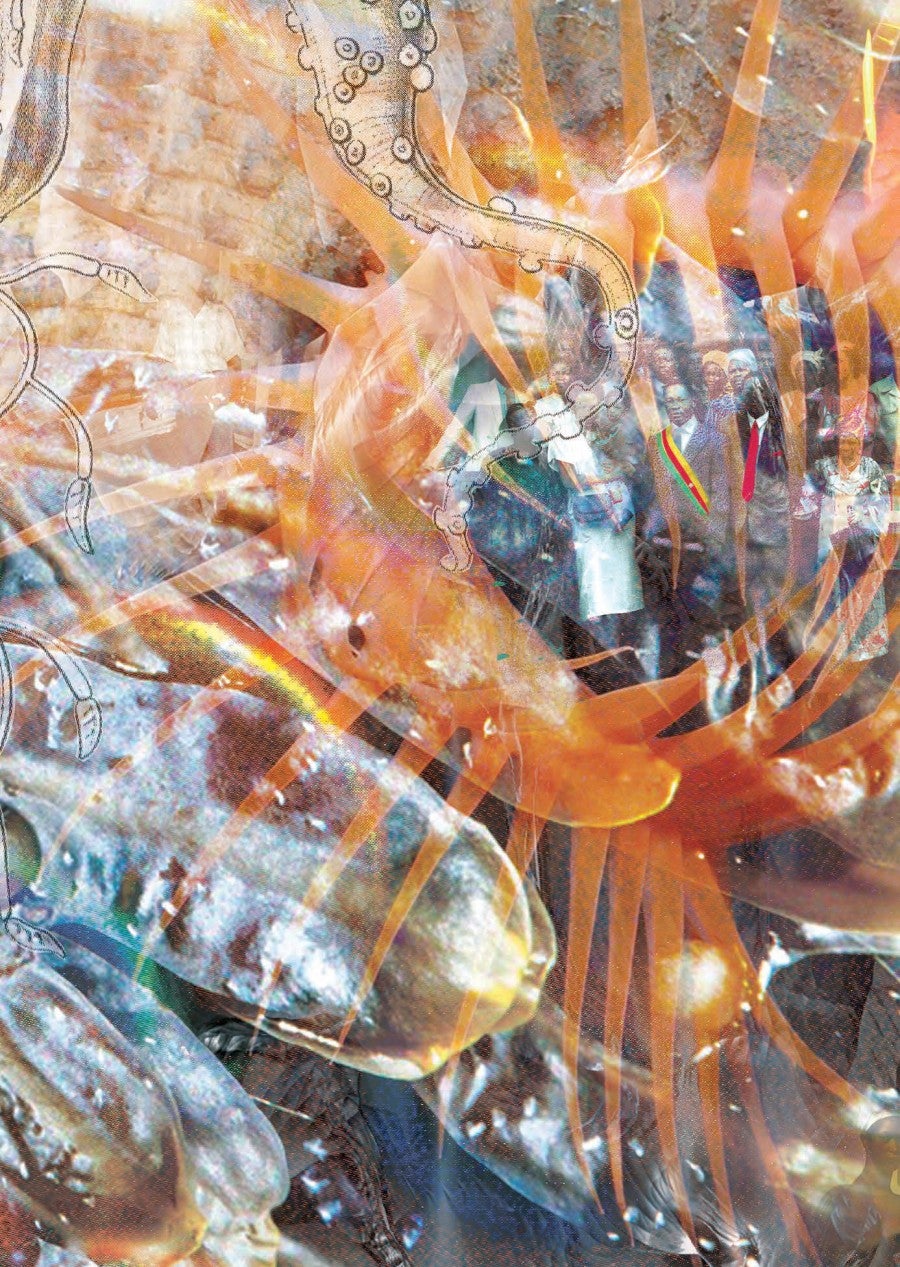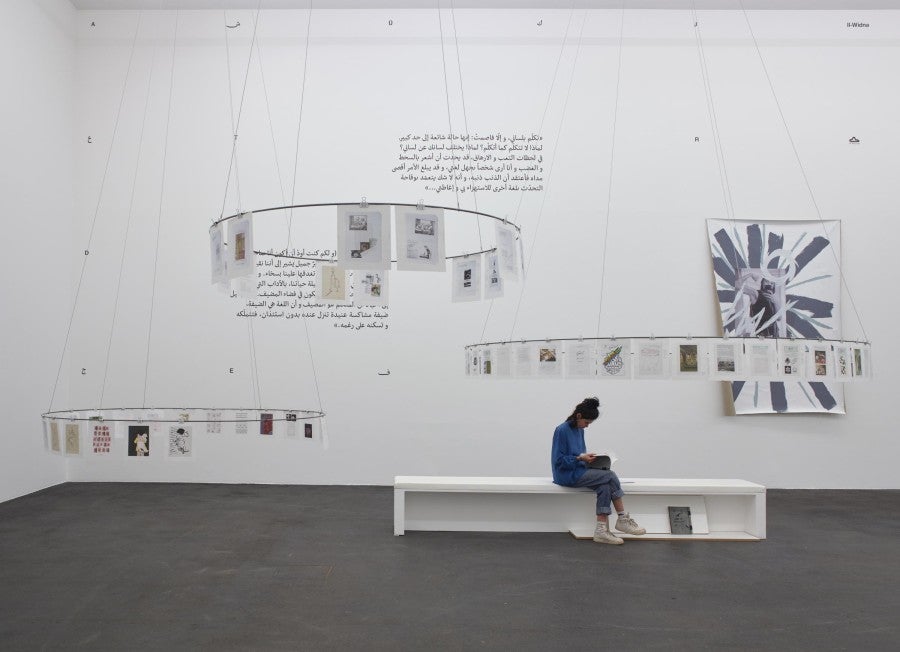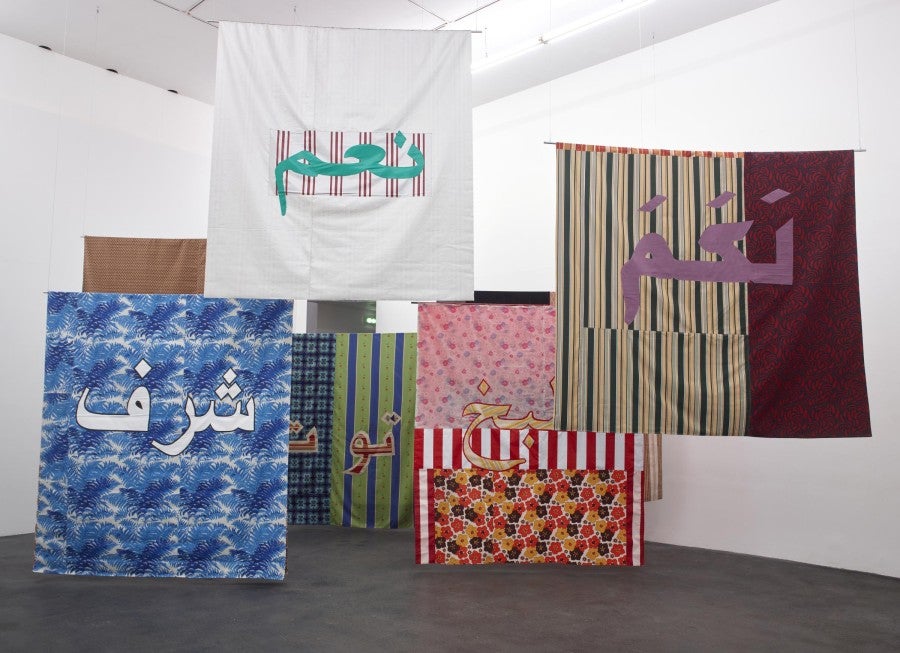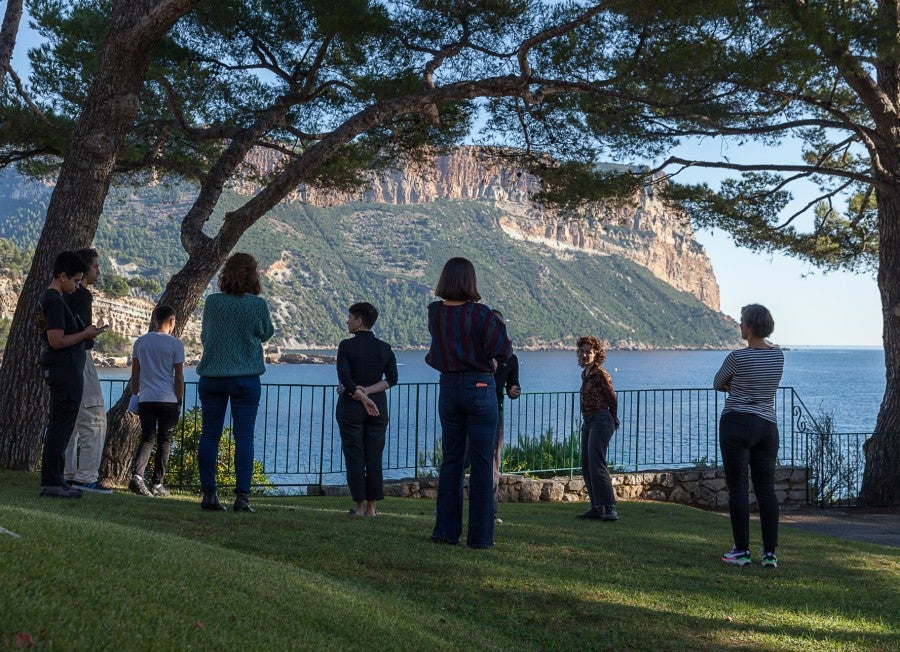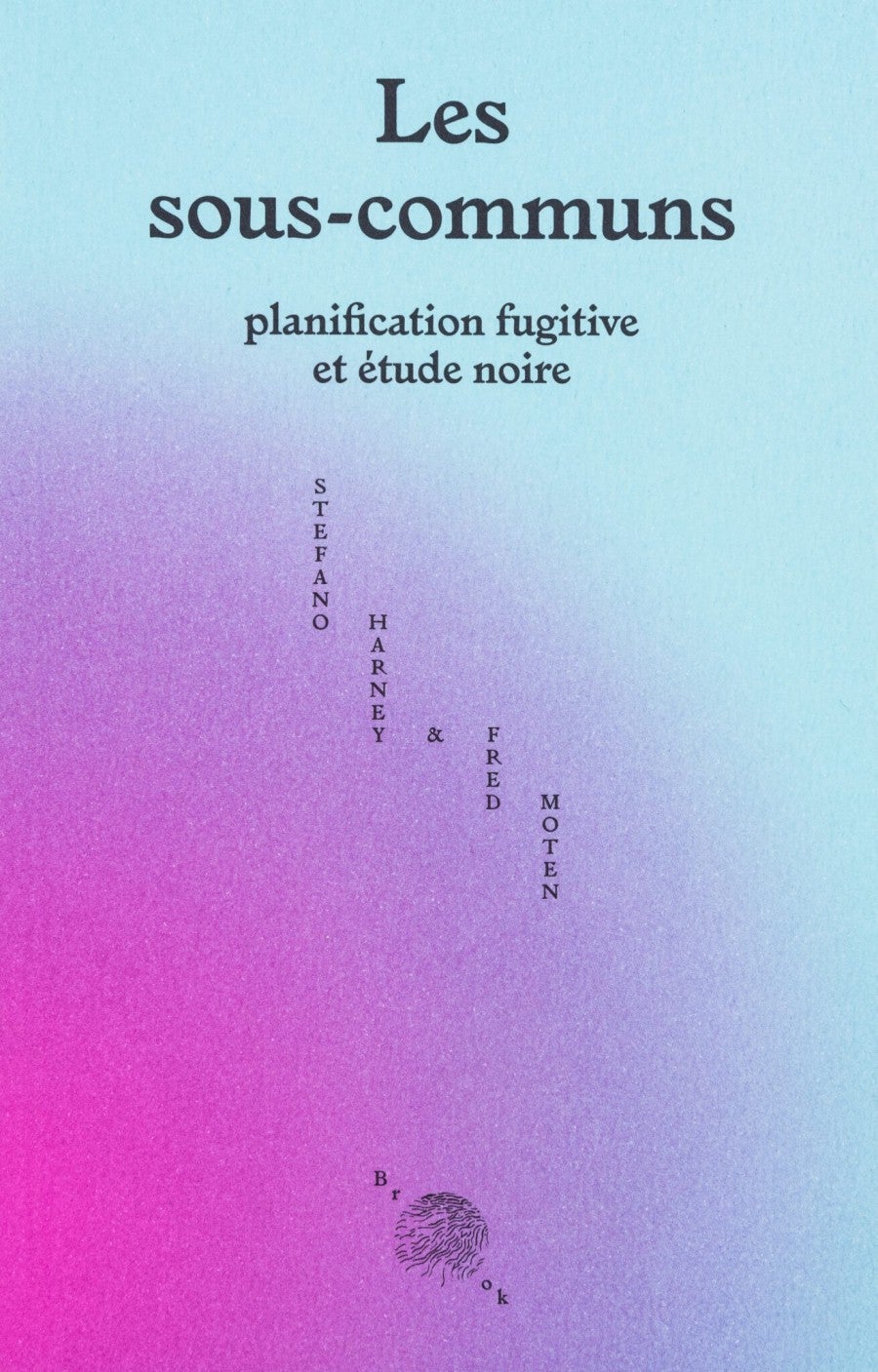Read
A Laboratory of Struggles: Alternative Narratives, Emancipation Strategies, and Production of Knowledge within the Contemporary Art Scene in France
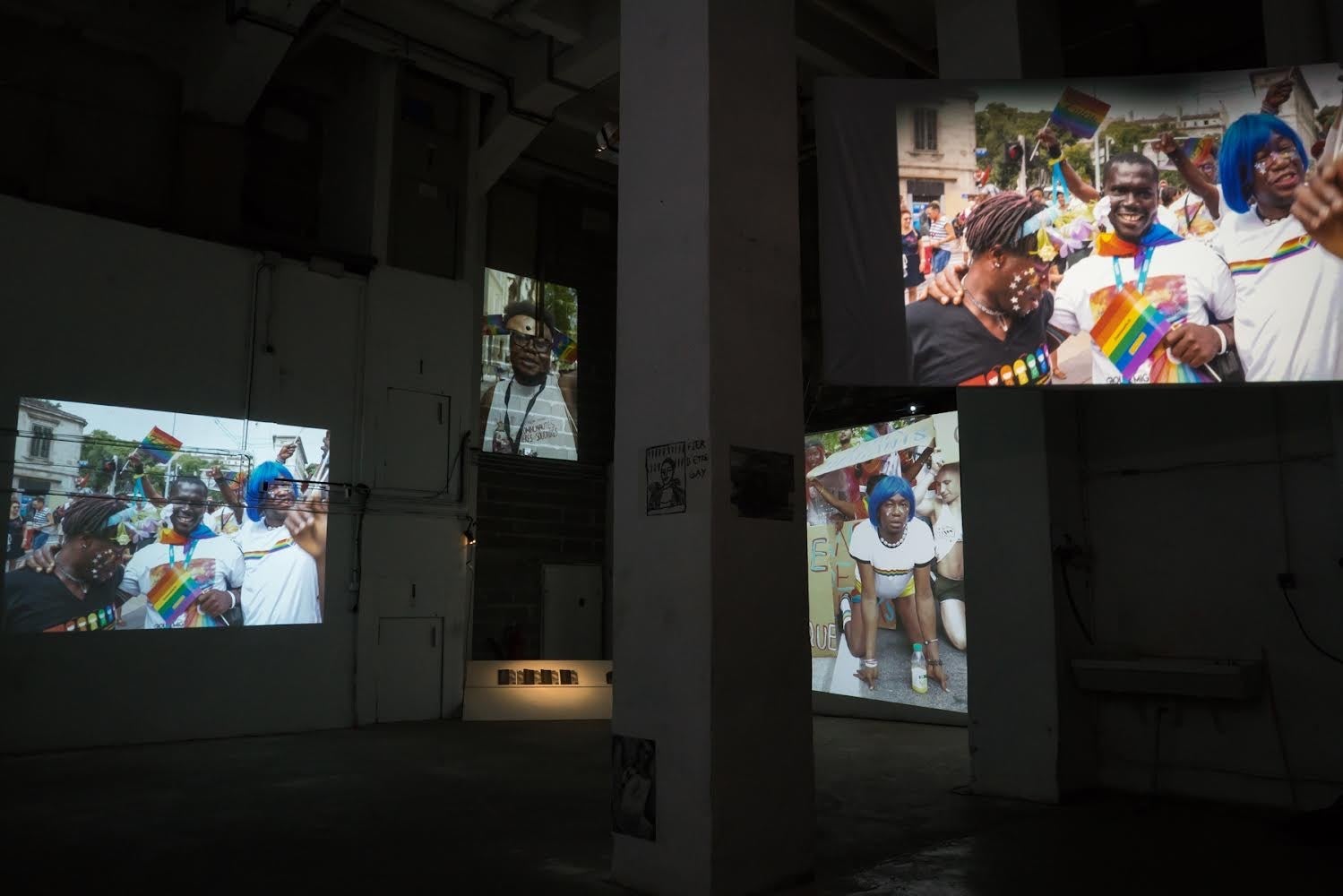
Anysia Troin-Guis is the laureate of the first edition of the TextWork Writing Grant
Disidentification is a concept linked to psychology and sociology, founded by José Esteban Muñoz in his book Disidentifications. It concerns the analysis of artworks and artistic approaches that calls the stereotypes of race or gender to which they have been assigned into question: in short, the artists who strive to subvert the codes of hegemonic culture (male, white, heterosexual, and cisgender). See José Esteban Muñoz, Disidentifications (Minneapolis and London: University of Minnesota Press, 1999).
Intersectionality is a notion derived from the social and political sciences, developed by racialised feminist theorists, including Kimberlé Crenshaw, in order to mitigate a lack in terms of the multiple processes of interconnected power relations, unpacking relationships of domination between social formations (race, gender, sexuality, disability, religion, etc.) that generate complex forms of discrimination. For a historical overview of the notion, see Éléonore Lépinard and Sarah Mazouz, Pour l’intersectionnalité (Paris: Anamosa, 2021).
Afrofuturism refers to a long-term movement from which an aesthetic derives, emerging in the mid-twentieth century, combining black culture and science fiction (see notably Sun Ra for music and Octavia E. Butler for literature). The term appeared under the plume of Mark Dery in his founding text “Black to the Future: Interviews with Samuel R. Delany, Greg Tate, and Tricia Rose”, in Flame Wars: The Discourse of Cyberculture (Durham, Duke University Press, 1994).
Josèfa Ntjam, interviewed by Marie Bechtouille, “Zombie Melancholy: Zombies Don’t Forget, They’re a Form of Memory. Interview with Josèfa Ntjam”, trans. Anna Knight, La belle revue [online] (2021): https://www.labellerevue.org/en/thematic-dossiers/universal-zombie-nation-lbr-11/itw-josefa-ntjam
Paul Gilroy, The Black Atlantic: Modernity and Double Consciousness (Cambridge: Harvard University Press, 1993). The sociologist, in the wake of Cultural Studies, develops a theoretical framework to analyse the cultural productions of the African diaspora and update a cultural history stemming from slavery and the slave trade. The pertinence of her statement is based on the foregrounding of a hybrid, transatlantic culture that refuses nationalist essentialism and builds on the encounter between territories surrounding the Atlantic – African, Caribbean, British, and American territories – informing a hybrid production reflecting the fluidity of diasporic identities.
See Kodwo Eshun, “Further Considerations on Afrofuturism”, The New Centennial Review, vol. 3, no. 2 (2003): 287–302. In 2010, The Otolith Group made the film Hydra Decapita, also based on the world of Drexciya.
See Zygmunt Bauman, Liquid Life (Oxford, UK: Polity Press, 2005). The theorist forges this expression to refer to contemporary societies whose laws and market economy are in constant flux and are based on overconsumption, rendering living conditions precarious and interhuman relationships superficial.
Quentin Deluermoz, Pierre Singaravélou, Pour une histoire des possibles. Analyses contrefactuelles et futurs non advenus (Paris: Éd. du Seuil, coll. L’Univers historique, 2016), 26. [All translations from quotations in French are ours, unless otherwise stated.]
Notably Fallon Mayanja, Aho Ssan, Hugo Mir-Valette (editingworldgrid), Nach, Sean Hart, Nicolas Pirus, Steven Jacques, Bamao Yendé & Le Diouck, Monochrome Noir, Crewrâle93, and Lala &ce.
Namely the gardens, universal exhibitions, or certain monuments.
In another text, he writes: “Anthropophagy is the cult dedicated to the instinctive aesthetic of the new land. It is the pulling apart of imported idols, to enable the ascent of racial totems. It is the land of America itself, as it is filtered and expressed through the vassal temperaments of its artists.”” Oswald de Andrade, Anthropophagies, trans. Jacques Thiériot (Paris: Flammarion, 1982), 261.
In this respect, see the fundamental work of Tarsila do Amaral.
Gaëlle Choisne, interviewed by Hélène Soumaré, Point Contemporain [French online journal] (January 2018): https://pointcontemporain.com/gaelle-choisne-entretien/
Gaëlle Choisne writes: “The word ‘zombie’ finds its origins in Haitian culture and in Creole means ‘ghost’ or ‘revenant’. With its source in Africa, the concept of the zombie assumed great importance within Haitian culture, where it is linked to the slavery and oppression on the island. By taking a potion, a man or a women, whose death has been clinically observed and whose funeral has taken place in front of everyone, is brought back to life by a sorcerer, in order to subjugate that individual. Even now, the omnipresence of the figure of the zombie can be explained by the persistence in Haiti of archaic political structures. This negative figure refers to the state of passivity in which the country lives and that allows the oligarchy to maintain its privileges.” La Feuille de boucher, published for the exhibition Gaëlle Choisne Cric Crac, presented at the contemporary art centre La Halle des bouchers de Vienne, from 14 February to 3 May 2015.
Dénètem Touam Bona, “Les métamorphoses du marronnage”, Lignes, vol. 16, no. 1 (2005): 39.
Notably Frantz Voltaire, director of the Centre international de documentation et d’information haïtienne, caribéenne et afro-canadienne, and Monique Dauphin, a feminist activist, engaged in the movement of Haitian immigrant women in Quebec.
Notably The Serpent and the Rainbow by Wes Craven (1988), Mondo Trasho by John Waters (1969), or the clip Thriller by John Landis and Michael Jackson (1983).
Manuel Zapata Olivella, El árbol brujo de la libertad : África en Colombia, orígenes, transculturación, presencia, ensayo histórico mítico (Valles: Universidad del Pacífico, 2002), 129.
For a more in-depth look at the relationships between transcription of history and empowerment, see Marine Cellier, Makandal en métamorphose. Héroïsmes et identités dans la littérature caribéenne, doctoral thesis under the direction of Crystel Pinçonnat, Aix-Marseille Université.
On this subject, José Esteban Muñoz writes in his founding book, Cruising Utopia: The Then and There of Queer Futurity (New York and London: New York University Press, 2009), 80: “Vogueing, for instance, is too often considered a simplistic celebration of black queer culture. It is seen as a simple appropriation of high fashion or other aspects of commodity culture. I am proposing that we might see something other than a celebration in these moves—the strong trace of black and queer racialized survival.”
Muñoz, Cruising, 80.
Christelle Oyiri, Sophye Soliveau, Kelly Carpaye, Eden Tinto Collins, Joseph Decange, Frieda, and Pierre Et La Rose.
The performance was created with the participation of the Maré Mananga choir, Christelle Oyiri aka Crystallmess, Sophye Soliveau, Kelly Carpaye, Eden Tinto Collins, Joseph Decange, Frieda, and Pierre Et La Rose.
Within the same perspective of redistribution, here financial and symbolic, see the workshop led by Gaëlle Choisne as part of the exhibition by Mohamed Bourouissa Urban Riders, held at the Musée d’Art moderne de la Ville de Paris (2018) with a group of refugees, from Eritrea, Sudan, Syria, or Afghanistan, based on the work of French-Cuban artist Hessie (1936–2017).
Mawena Yehouessi, À Plusieurs exhibition text in English, available on: https://www.fraclorraine.org/media/PRESS_MAY21.pdf
Notably with Mawena Yehouessi aka M.Y, Nicolas Pirus, Fallon Mayanja, Hugo Mir-Valette (editingworldgrid) and Borgial Nienguet Roger.
Various artists were therefore invited: Yussef Agbo-Ola, Julien Creuzet, Hlasko, Elsa Mbala, Jenny Mbaye, Memory Biwa et Robert Machiri, Aisha Mirza and Mahta Hassanzadeh, Liz Mputu, Nolan Oswald Dennis, Bogosi Sekhukhuni, Justine Shivay.
See (in French): https://blogs.mediapart.fr/kteguia/blog/190521/plusieurs-frac-lorraine-ou-d-un-enfer-pave-de-bonnes-intentions.
Sara Ahmed, On Being Included: Racism and Diversity in Institutional Life (London: Duke University Press, 2012), 66.
Sara Ahmed, “Scientific genealogies, practices and citation privileges: Academic walls”, Living a Feminist Life (Durham and London: Duke University Press, 2017), 158.
This was written shortly before the publication of the Libération article of 8 July 2022, describing situations of harassment and sexual abuse by a teacher from this same art school. This concomitance illustrates perfectly that it is – now, more than ever – necessary to instigate hard thinking and changes on the pedagogical level in art schools and to provide students with safe spaces for working and speaking. See (in French): https://www.liberation.fr/societe/droits-des-femmes/harcelement-sexuel-propos-racistes-humiliations-la-villa-arson-une-ecole-dart-au-climat-deletere-20220708_TBWTYONCQ5C53OU3A4X5BVIBUU/
See the presentation of the platform La surface démange, available (in French) on: https://villa-arson.fr/actualites/2021/09/la-surface-demange
See bell hooks, Teaching to Transgress: Education as the Practice of Freedom (London: Routledge, 1994).
The philosopher explains this expression as follows: “I described citations as academic bricks through which we create houses. When citational practices become habits, bricks form walls. I think as feminists we can hope to create a crisis around citation, even just a hesitation, a wondering, that might help us not to follow the well-trodden citational paths. If you aim to create a crisis in citation, you tend to become the cause of a crisis.” (Ahmed, Living a Feminist Life, 148.)
On this subject, see the recent podcast (in French) Paye ta vie d’artiste ! made by Manifesto XXI and coproduced by the Printemps de l’art contemporain, held at the SOMA in Marseille, for a discussion entitled “#balancetonécoledart : vers de nouvelles pédagogies” about pedagogy, precarity, and power relations in the art world, starting in schools: https://manifesto-21.com/podcast-paye-ta-vie-dartiste-ecole-dart/.
bell hooks, Yearning: Race, Gender, and Cultural Politics (Boston: South End Press, 1990), 149.
Virginie Bobin is also a member of the editorial committee of TextWork.
In this regard, see the work of Emily Apter, notably The Translation Zone. A New Comparative Literature (Princeton, New Jersey: Princeton University Press, 2006), or the most recent book [in French] by Tiphaine Samoyault (Paris: Seuil, 2020).
Judith Revel, “Construire le commun : une ontologie”, Rue Descartes, vol. 67, no. 1 (2010).
“Qalqalah قلقلة ou l’aventure de l’hétérolinguisme.” Interview by Éric Mangion and Luc Clément. Published on Switch on Paper (21 October 2021).
The exhaustive list of translators: Rémi Astruc, Orestis Athanasopoulos Antoniou, Laetitia Badaut Hausmann, Antoine Barberon, Katia Barrett, Paul Batik, Nelson Beer, Amina Belghiti, Emma-Rose Bigé, Mélanie Blaison, Elisabeth Boshandrey, Kathleen Bonneaud, Ana Cecila Breña, Eugene Brennan, Nina Breuer, Willie Brisco, Aimo Buelinckx, Salomé Burstein, Ninn Calabre, Ève Chabanon, Ghalas Charara, Virginie Chavet, Marie Chênel, Camille Chenais, Etienne Chosson, Lisa Colin, Alexandre Collet, Christel Conchon, Thomas Conchou, Sofia Dati, Laure de Selys, Jérôme de Vienne, Florent Dégé, Judith Deschamps, Fig Docher, Eugénie Dubreuil, Diana Duta, Jacob Eisenmann, Abderrahmane El Yousfi, Marion Ellena, Lou Ellingson, Phoebe-Lin Elnan, Iris Fabre, Kim Farkas, Cédric Fauq, Claire Finch, Lucas Fritz, Léa Gallon, Nathalie Garbely, Léa Genoud, Leo Gentil, Valentin Gleyze, Sarah Holveck, Sandrine Honliasso, Caroline Honorien, Nina Kennel, Nora Kervroëdan, Nadir Khanfour, Soto Labor, Tarek Lakhrissi, Ana Marion, Hélène Mateev, Callisto McNulty, Juliette Mello, Léna Monnier, Lucas Morin, Violette Morisseau, Elena Lespes Muñoz, Margot Nguyen, Jordan Nicholson, Pierre Niedergang, Rokhshad Nourdeh, Léo Osmu, Rebecca Oudin-Shannon, Laura Owens, Sophie Paymal, Marielle Pelissero, Céline Peychet, Baptiste Pinteaux, Madeleine Planeix-Crocker, Céline Poulin, Rosanna Puyol, Catherine Quéloz, Eva Fleur Riboli-Sasco, Mathieu Rajaoba, Lily Robert-Foley, Delphine Robet, Pauline Roches, Guillaume Rouleau, Luce Rouyrre, Neige Sanchez, Samy Sidali, Jon Solomon, Chloé Subra, Myriam Suchet, Oona Sullivan-Marcus, Laura Trad, Emma Tricard, Sandar Tun Tun, Esther Um, Gemma Ushengewe, Mona Varichon, Alice Wambergue, Mawena Yehouessi.
Notably featuring the participation and creations of Anis Khamlich, Alex Bakabum, Allieu Jallah, Abdo, Ahmed Ba, Abulah Koroma, Austin Ebora Muoghalu, Abdul Mustapha Koroma, Amadu Jalloh Alhade, Abdul Mustapha Koroma, Bai, Ben Rayane, Brian Recha Jongis, Calistus Anaezionwu, Fouad, Isha Koroma, Isaac Hura, Jabbie, John Mansaray, Kai Biango, Moussa Fofana, Mohamed Sawaneh, Mohamed Lamarama Jalloh, Mehdi, Mohamed A’Sesay, Matthew Ohajiani, Nana, Paul, Raymond, Peter, Sylla, Souleymane Traore, Suleyman Mohammed, Sesay Foday, Sario Camara, and Oneyeke.
From March 2021, workshops were led with various artists: two members from the group Ramziya Hassan (Oriental dance) and Anis Khamlich (voice, karaoke), Nina Gazaniol (video), Erika Nomeni (writing/rap), Alou Cissé Zol (contemporary dance), Andrew Graham (waacking dance), Silvia Romanelli (costume and make-up drag queen), Elsa Ledoux (screenprint reproductions), Daouda Keita (contemporary dance), Maria de la Vega (Latin dance).
Lépinard and Mazouz, Pour l’intersectionnalité, 42–43.
AOZIZ is a network in Marseille working with mixed groups of people with or without disabilities, and minority or marginalised individuals.
In this vein, working for several years with Liam Warren, I offered to write the exhibition text in order to problematise the stakes of this kind of approach and helped with the mediation of the exhibition and performances with various audiences.
Olive Martin and Patrick Bernier, X et Y c/Préfet de... - Plaidoirie pour une jurisprudence, performance created in 2007, in association with Sébastien Canevet and Sylvia Preuss-Laussinotte, performed by S. Canevet and S. Preuss-Laussinotte and produced by Les Laboratoires d’Aubervilliers.
For an in-depth analysis of this extraordinary performance, see Cécile Debost, “Plaidoyer pour une jurisprudence”, Les Cahiers de la Justice, vol. 1, no. 1 (2015): 23–27.
Private interview with the co-authors (June 2022).
Muñoz, Cruising Utopia, 189.


